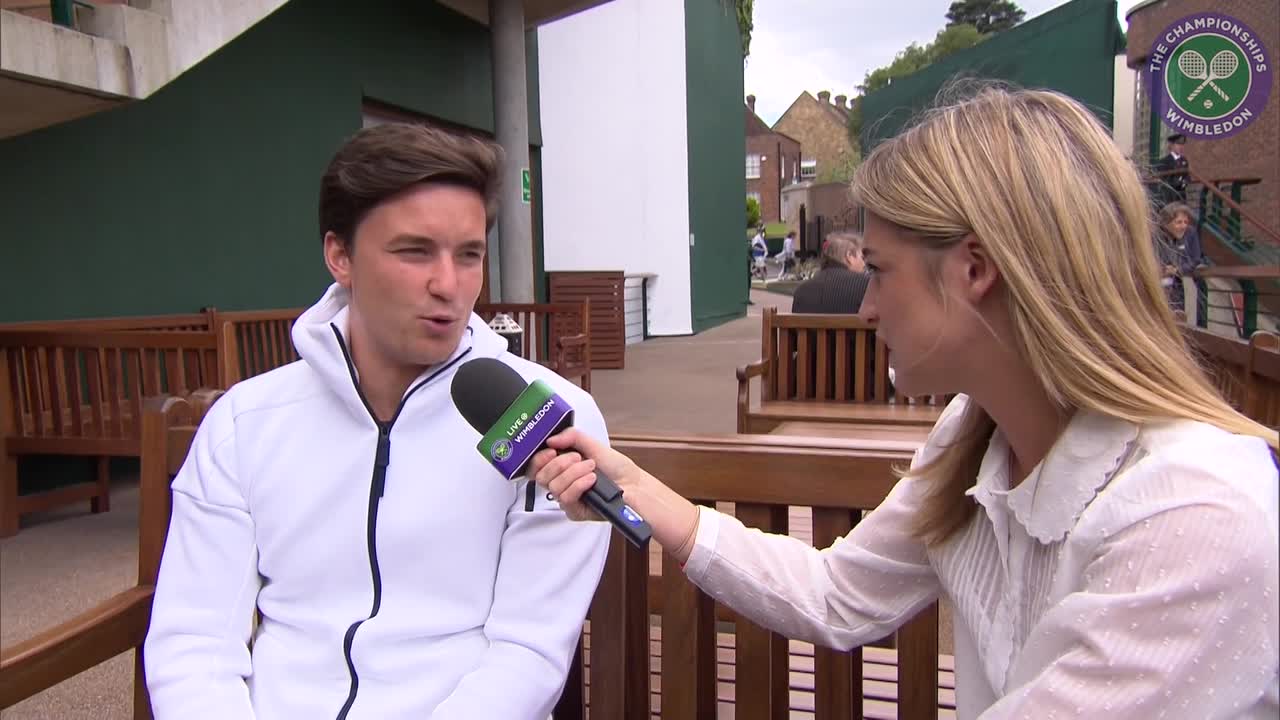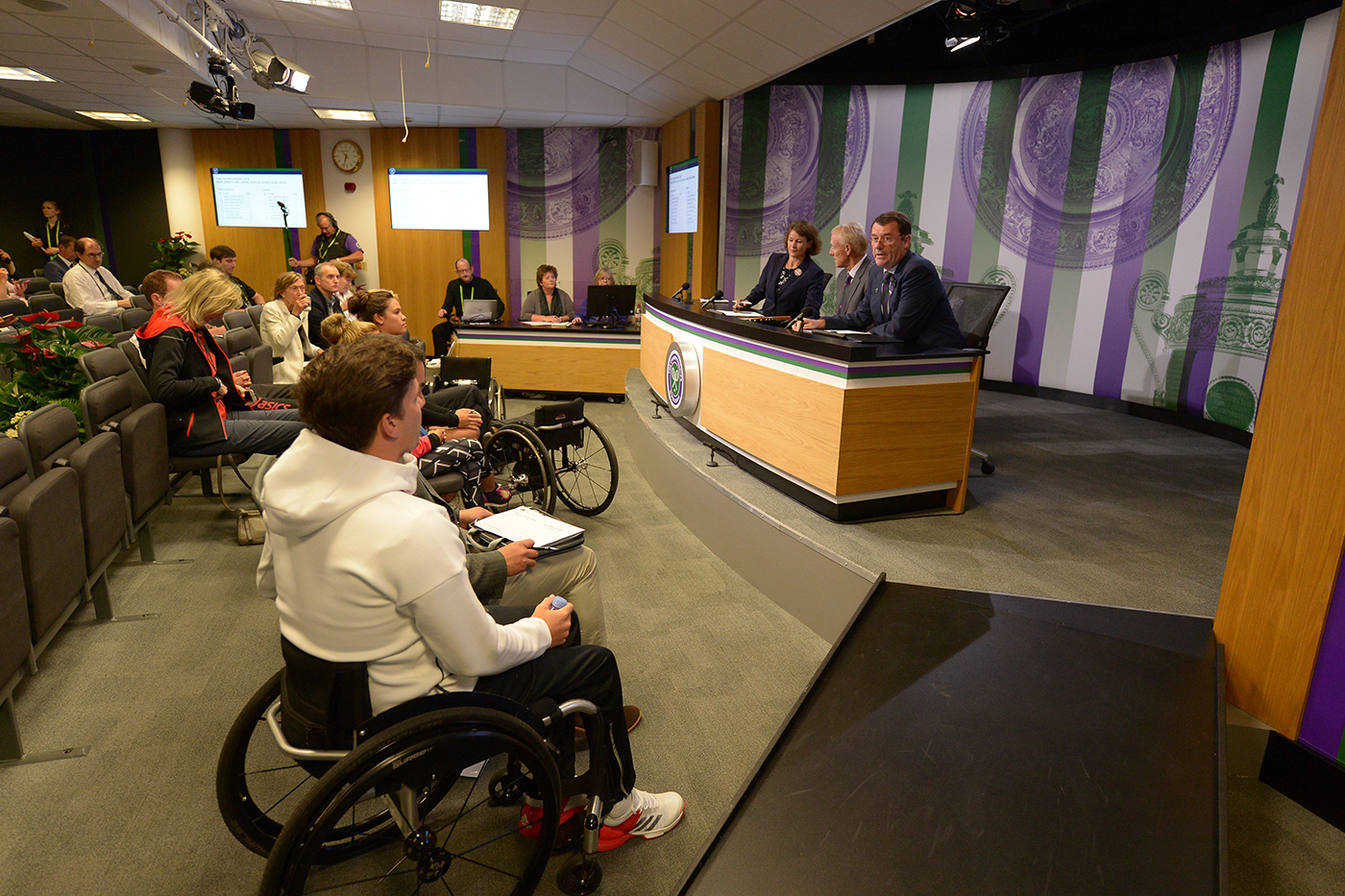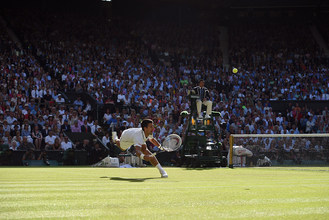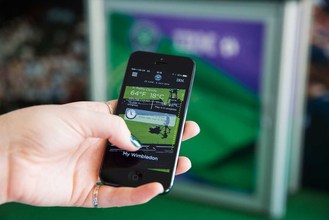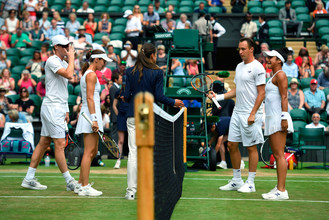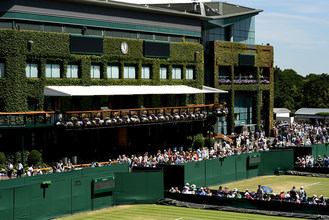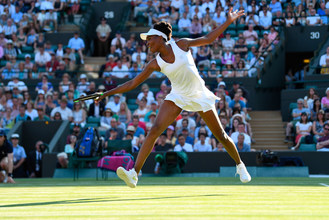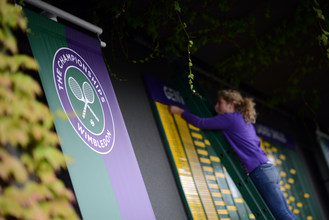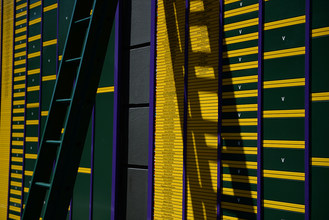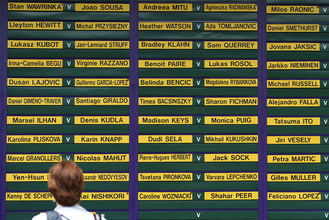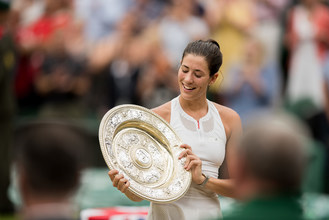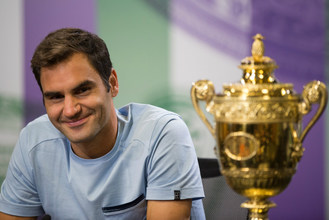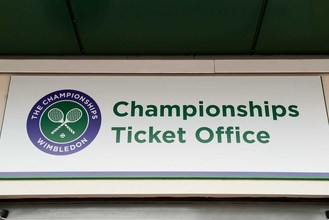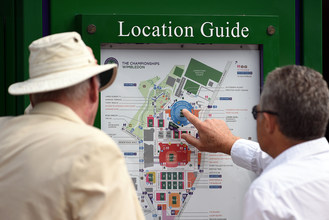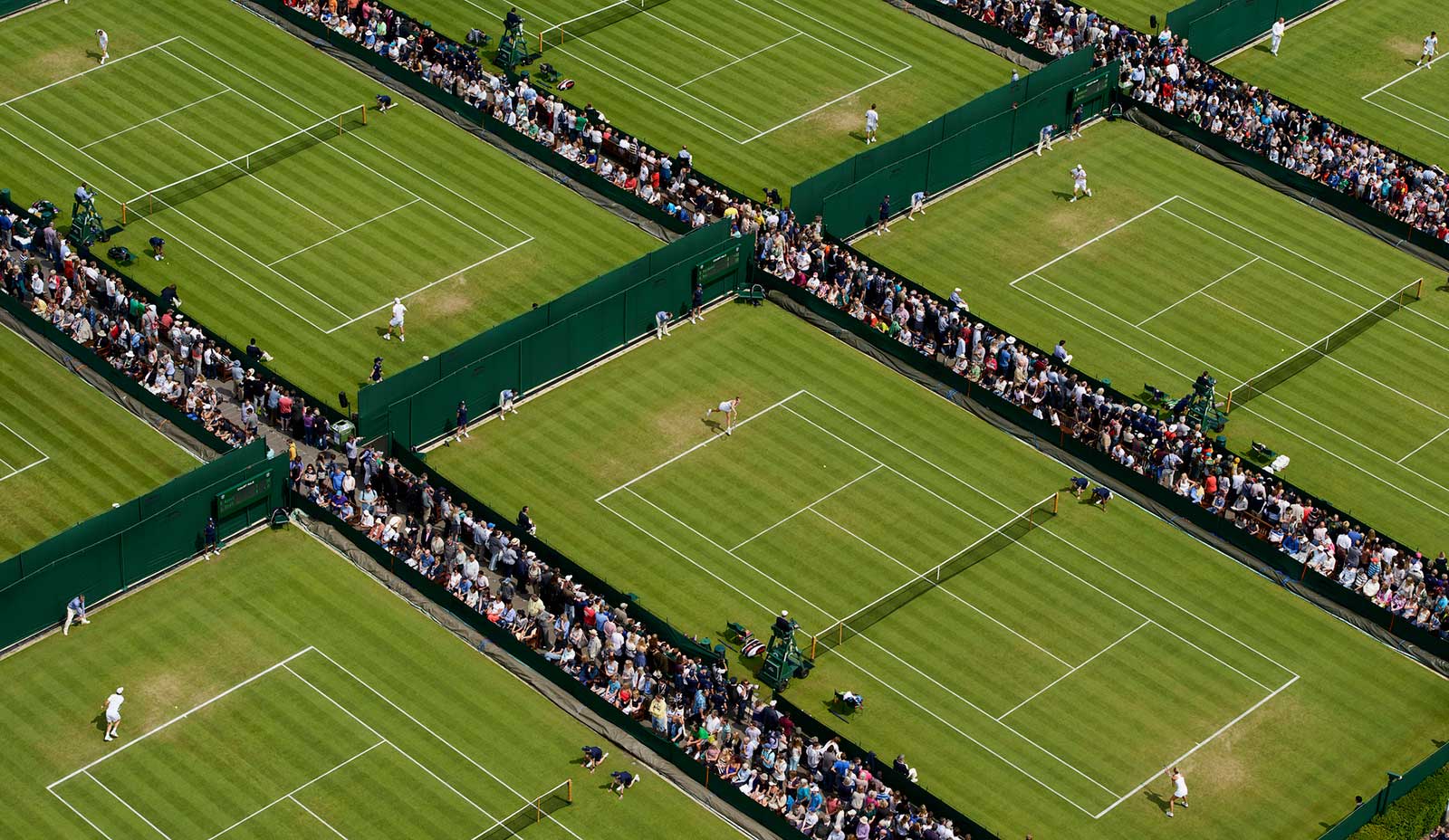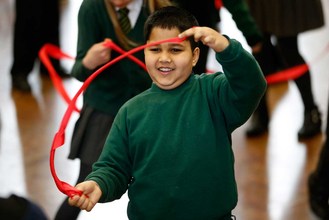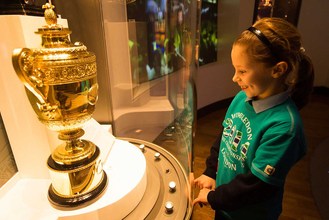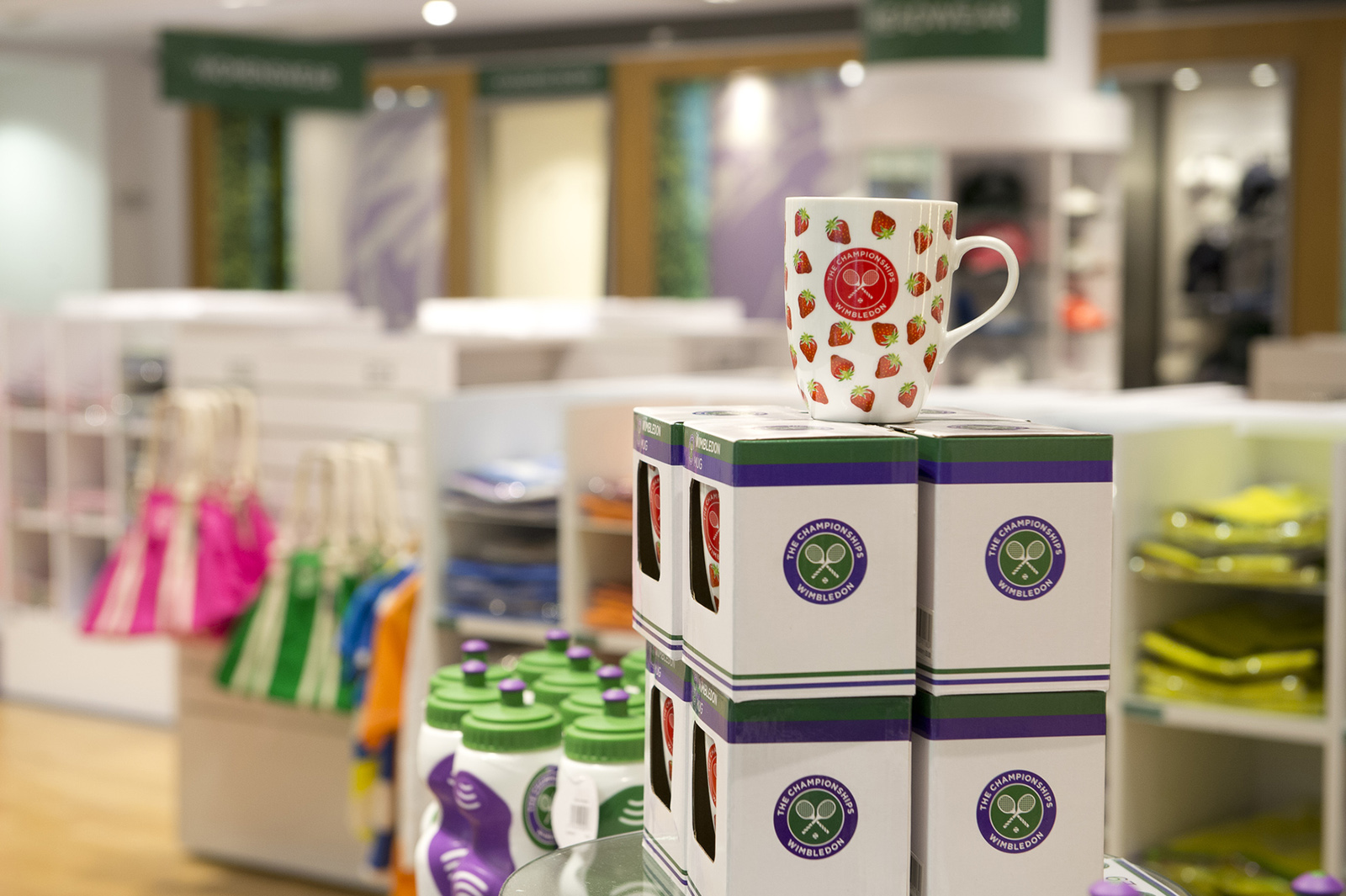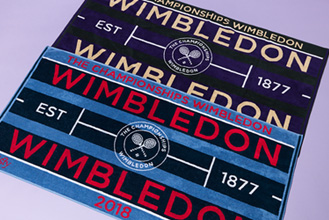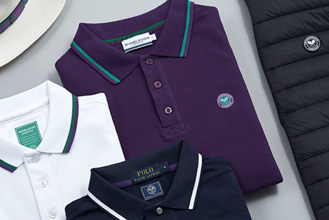Follow the latest news and scores from Wimbledon 2016 on Wimbledon.com or Apple TV, or download the official IOS or Android apps for smartphone and tablet
The All England Club Chairman Philip Brook welcomed wheelchair competitors to the 2016 Championships on Tuesday as the historic draw for the inaugural ladies' and gentlemen's singles events took place.
“In 2001 wheelchair tennis made its debut here, and I am proud to see the sport develop from invitational events, to doubles and now singles,” said Brook at the ceremony, which was overseen by Gerry Armstrong, Referee, Wheelchair Tennis and Clare Wood from the Referee’s Office.
The Chairman also announced total prize money of £200,000 for the wheelchair events, doubles and singles - “which is the highest on offer at any Grand Slam”.
Leading British wheelchair tennis stars Gordon Reid and Jordanne Whiley, both 24 and ranked world No.3 were among sports celebrities invited to watch Centre Court action from the Royal Box on Saturday. They were quick to express their excitement about the forthcoming competition.
“I grew up watching Wimbledon on TV. It was always a dream of mine to play singles here,” said Reid. “To have the opportunity to be a part of the first field of players that’s going to go down in history is a massive opportunity. I can’t wait to get out on the match court.”
The quality of wheelchair tennis is at its highest... I'm fit, I'm ready, we've had some good training
Whiley agreed Wimbledon is really special: "We live in Great Britain. For us to be able to showcase our sport to the highest level in the singles event is absolutely fantastic. For me, this one's the big one. I really want to do well. I'm here to win Wimbledon singles. I’m sure Gordon is too.
"Now is the right time to introduce it here. The quality of wheelchair tennis is at its highest. It's going to be difficult on the grass because we've only known doubles and now we have to cover a whole court. But I'm fit, I'm ready, we've had some good training. It's going to be interesting.”
Fast and skilful, bold on strategies and mesmerising to watch, wheelchair tennis has always thrilled spectators at the All England Club. The challenge of grass for a wheelchair player should not be underestimated. The friction on chair wheels caused by the soft surface makes extra physical demands.
“With all the rain this year, it's going to be quite soft. For us, just pushing is going to be tough on the shoulders. Especially if the match is going to go like three or four hours,” Whiley said.
“On grass you don't hold the momentum,” added Reid. “You push the same way as you would on a hard court, but you're constantly having to generate power and shift your body weight every time you push the chair. It's going to be a lot more tiring on the upper body. But like Jordanne said, I think wheelchair singles is going to look good on the grass.”
Is the low bounce tough too? “Probably not as tough for us as somebody like Isner!” said Reid. “It's probably easier for us when we're already sitting pretty low. Clay is harder in that respect because we're not that tall and we can't jump.”
Tiny equipment tweaks can help, such as raising the back wheel to compensate for the way wheels sink on the grass, or dropping pressure in tyres to increase the surface area. Training for grass involves extra work on balance and physical strength.
“It's difficult to prepare because we only really get the opportunity to train on grass the week before the event,” said Reid. “What I've been doing in training is a lot of bungee work. I've had my coach running behind me holding a bungee, which gives you a resistance similar to grass. Apart from that, unless you weight yourself up, put some extra weight on your chair or something, it's difficult to simulate grass.”
As Whiley eyes up her first match against Great Britain team-mate Lucy Shuker and Gordon contemplates his tactics for his head to head with the Frenchman Nicolas Peifer, what kind of play can spectators expect? “The rallies will definitely be shorter,” said Whiley.
“I think serve and return is going to be the most important thing for us, who can get the first strike in, who can get their serve in the right place. It's less about being in the rally and more about that kind of first strike or third ball.”
Reid described how he has worked hard on his volleys. “I don't know about everybody else, but that's grass court tennis, isn't it? The classic grass court tennis is a lot of slicing, a lot of volleying. The players with better serves normally do well. I think it will be similar for us.”
With 20 matches across four events, it presents a great opportunity to raise the profile of wheelchair tennis. What messages would the British players hope young people might take from seeing them in action?
“For me, sport completely changed my life from when I was a young girl,” said Whiley. “I was very insecure. I didn't have many friends. I was born with my disability. I was in and out of hospital constantly. When I got into tennis, I became confident. I believed in something, which made me believe in myself. For me it’s really important that young disabled people see that there's something more out there. It's not just you in a wheelchair and your life has ended. Your life actually can just begin from that.”
Reid, too, expressed a heart-felt message. “If any kids or young people with disabilities get the opportunity to see us playing sport at a high level, then, like Jordanne said, they can be inspired to do a similar thing and know there's a lot in life you can achieve when you're in a chair. At the same time I think it's important that young people without disabilities can see that people in chairs are real people, normal human beings who can be incredible athletes. There's still a little bit of stigma in some places about disability and it’s important that we can do as much as we can to bring that barrier down.”





